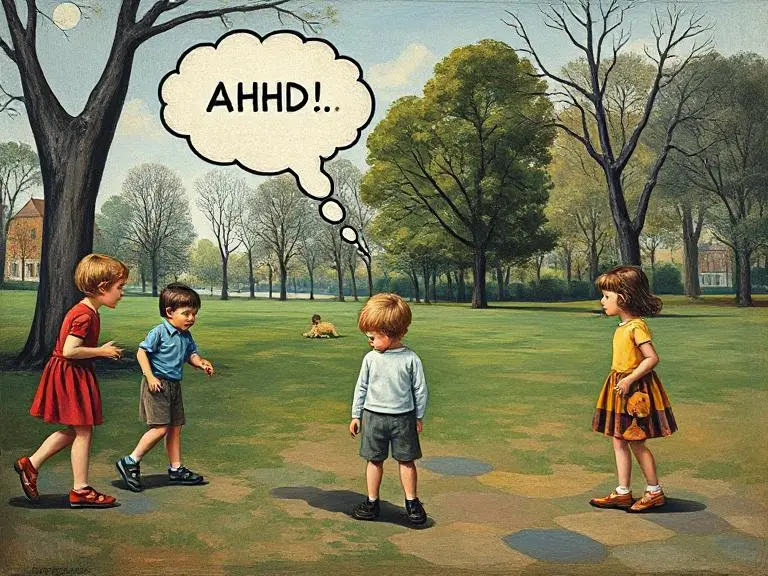How ADHD Affects Emotional Health: Understanding the Hidden Struggles
Attention-deficit/hyperactivity disorder (ADHD) is often misunderstood as a challenge with focusing or hyperactivity. However, its impact goes far beyond the classroom or workplace—it deeply affects a child’s emotional well-being and social relationships. For children with ADHD, navigating daily life can feel like trying to solve a puzzle that is missing pieces. They may struggle with self-esteem, emotional regulation, and forming meaningful connections with others.
This blog explores the emotional and social dimensions of ADHD and provides practical advice for parents, teachers, and caregivers to support children beyond their diagnosis.
Table of Contents
Toggle
How ADHD Affect Emotional Well-Being

Children with ADHD frequently experience emotions more intensely than their peers. Their brains process information differently, which can lead to:
- Frustration and overload
Tasks that seem simple to others, like completing homework or following instructions, may feel overwhelming to a child with ADHD. This can lead to frustration, anger, or even tears. - Low self-esteem
Frequently struggling in school or social settings can make children with ADHD feel like they are “not good enough.” They may internalize criticism or compare themselves to their peers, leading to feelings of inadequacy. - Emotional Imbalance
It can be difficult for children with ADHD to control their emotions. They may have sudden outbursts, struggle to calm down, or feel feelings like sadness or excitement more intensely. - Anxiety and depression
Trying to “fit in” or “keep up” can be overwhelming. Many children with ADHD develop anxiety or depression as they grow older, especially if their needs are not understood or addressed.
How ADHD Affects Social Relationship
Social relationships can be especially challenging for children with ADHD. They may struggle with:
- Impulsivity
- Difficulty understanding social cues
- Rejection sensitivity
- Difficulty taking turns and being patient

Practical Advice For Parents and Teachers
Helping a child with ADHD requires patience, understanding, and a proactive approach. Here are some strategies to help them thrive emotionally and socially:
For Parents:
- Celebrate Strengths
- Focus on your child’s unique talents and abilities. Whether they’re creative, energetic, or curious, highlighting their strengths can boost their confidence.
- Create Structure and Routine
- Consistent routines help children with ADHD feel secure and reduce pressure. Use visual schedules or checklists to make tasks more manageable.
- Teach Emotional Regulation
- Help your child identify and name their feelings. Practice calming techniques such as deep breathing, mindfulness, or taking a break when they feel overwhelmed.
- Foster Social Skills
- Role-play social scenarios at home, such as how to start a conversation or handle a disagreement. Encourage empathy by discussing how others may feel in different situations.
- Be Their Advocate
- Work closely with teachers and caregivers to make sure your child’s needs are met. This may include accommodations such as extra time for tests or a quiet place to work.
For Teachers:
- Give clear instructions
- Break tasks into small, manageable steps and give instructions verbally and in writing. Check for understanding before moving on.
- Use Positive Reinforcement
- Praise effort and progress, not just results. A simple “Great job focusing today!” Can help a lot in increasing the self-confidence of the child.
- Create an Inclusive Environment
- Pair students with ADHD with supportive peers for group activities. Encourage teamwork and teach the class about empathy and understanding.
- Allow for Movement
- Incorporate breaks for activity into the day. Allowing the child to stretch, move around, or fidget can help them stay focused and controlled.
- Communicate with Parents
- Regular updates and collaboration with parents can ensure consistency between home and school. Share what is working and where the child may need extra support.
A message of Hope

While ADHD presents challenges, it’s important to remember that children with ADHD are often incredibly creative, energetic, and resilient. With the right support, they can learn to manage their emotions, build strong relationships, and succeed in their unique way.
As parents, teachers, and caregivers, our role is to provide a safe and understanding environment where these children can thrive. By focusing on their strengths, teaching them coping strategies, and advocating for their needs, we can help them move beyond the diagnosis and embrace their full potential.
Call to Action
If you have a child with ADHD or you work with one, what strategies have you found helpful? Share your experiences in the comments below – your insights may inspire and support others on this journey!
Conclusion
ADHD is more than just a diagnosis – it’s a journey that shapes a child’s emotional well-being, social interactions, and self-esteem. While the challenges are real, the opportunities for growth and resilience are also real. By understanding the emotional and social impacts of ADHD, parents, teachers, and caregivers can provide these children with the support, structure, and empathy they need.
Together, we can move beyond labels and help children with ADHD unleash their full potential, celebrate their unique strengths, and lead them to a brighter, more confident future.
Frequently Asked Questions
What is ADHD and how does it affect mental health?
ADHD (attention-deficit/hyperactivity disorder) is a neurodevelopmental condition that affects focus, impulse control, and hyperactivity. In addition to these symptoms, it can also affect emotional regulation, self-esteem, and social relationships, leading to feelings of anxiety, depression, or isolation.
Why do children with ADHD struggle with emotions?
Children with ADHD often experience emotions more intensely and have difficulty regulating them. Their brain processes information differently, making it harder to effectively manage frustration, anger, or sadness.
How does ADHD affect a child's social life?
ADHD can make it challenging for children to read social cues, take turns, or control impulsive behavior. This can lead to misunderstandings, conflicts with peers, and feelings of rejection or loneliness.
Can ADHD cause anxiety or depression?
Yes, children with ADHD are at a higher risk of developing anxiety or depression because of the constant challenges they face at school, in social settings, and in daily life. Early support and intervention can help reduce this risk.
